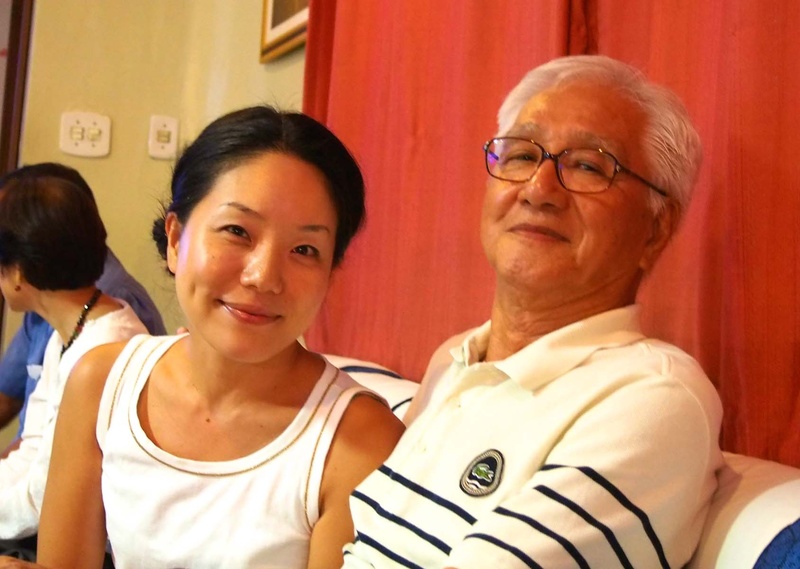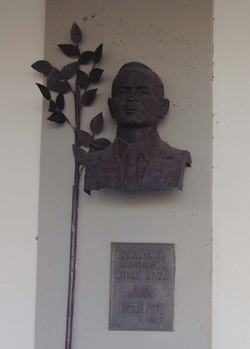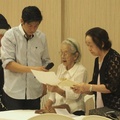"Would you like to have a drink sometime soon?" I was invited by Tadashi Sudo, who is a drinking buddy that I meet up with once a month together with the Japan-Brazil Association and fellow volunteers, and who is one of the few friends I met in Brazil. He doesn't drink much, but he's good at getting people to drink. He's 182 cm tall, has a very kind face with slightly drooping eyes. When I asked him, "Are you popular?" he replied, "No, I'm not. I was always focused on my work." He showed me photos of him when he was young, and he was a very handsome man. He must have been quite popular, but it's not a lie to say that he was always focused on his work. After all, he is a postwar immigrant who came here 61 years ago. He must have worked hard and endured hardships that I can't even imagine in order to survive in Brazilian society.
When Sudo was a fourth-year university student, his father said, "Let's go to Brazil," and the family emigrated in 1954. He wanted to graduate from university and had plans for what to do after that, but "he also had a longing for Brazil." In Shanghai, where he spent his childhood, his father ran a newspaper sales business. "He probably wanted to make a name for himself in Brazil," says Sudo, gazing into the distance, as he looks at the view of Porto Velho, the border town with Bolivia where he settled. He has been there several times, and the temperature can reach 40 degrees depending on the season. It is located inland and feels hotter than Belem along the river. Every time the red soil flies, he imagines, "How did the immigrants live here with no clear future?"
At Ueno High School and Waseda University, young men from the city who were passionate about basketball would take machetes and axes and go into the primeval forest to build their homes and plant potatoes and corn. Of course, they caught malaria. One time, the rubber trees they planted burned, and they sat leaning against them while looking up at the night sky, wondering, "What am I doing here?" It was exactly three years after they had settled there. Encouraged by his two older brothers who suggested he find a different job in the city, he was the only one to go to Belém.
After a 3000km boat journey, he met Kotaro Tsuji, the manager of the company he would later work for. Tsuji, who is famous for being the driving force behind restarting immigrants in the Amazon after the war, owned a trading company that dealt with jute. He was invited to work there, and joined the company, learning management know-how. Later, when he visited the company for an inspection, Tokutaro Okada, a former senior at university and now branch manager of a subsidiary of Mitsui & Co., called him and he ended up working at the Belem branch of Brazil Bussan (now Mitsui & Co.), so he left Tsuji's company after three years.
However, Sudo says, "I'm grateful to Mr. Tsuji for taking me in even though I didn't know how to keep accounts." He worked for the company he worked for for over 30 years (currently Mitsui Foods, a subsidiary of Mitsui & Co.) and became a director, and the foundation of his experience there is "the three years I spent working hard in the Amazon with Mr. Tsuji." There is a bronze statue of Mr. Tsuji at the entrance to the building where the Hokuhaku Japanese Language Promotion Center, where I work, is located. Mr. Tsuji, who could be said to be the father of Amazonian immigration history, would be surprised to see Sudo today. At the age of 82, he founded a company and is still an active company employee who travels to São Paulo and Japan on business trips.
He handed me his new business card and told me that he had opened a company to export açai to Japan, and I couldn't help but ask, "Are you still working?!". "I'm grateful that people can rely on me at my age. And my old work ethic is starting to bubble up again," he said. I imagined how he must be a proud son to his father, who wanted to make his mark in Brazil. Although he was "blessed with the good fortune of meeting the right people at the right time," his own ability to make the most of it cannot be denied. A young man who spent every day developing the unexplored land of Porto Velho has become a director of a major Japanese company and is still active at over 80 years old. I admire his energy and mental strength.
Although Mr. Sudo is a naturalized citizen, he is a Japanese born in the first decade of the Showa era who writes "anata" as "kijo" and "watashi" as "kosei."
Mr. Sudo, who has survived in Brazilian society, seems really happy when he talks about his high school classmates whom he meets every year in Japan. Deep in his heart, he probably sees himself chasing a ball, aiming for the goal. The goal of life is far away. The pioneers of the Amazon will continue to carve out their own path.
© 2015 Asako Sakamoto








